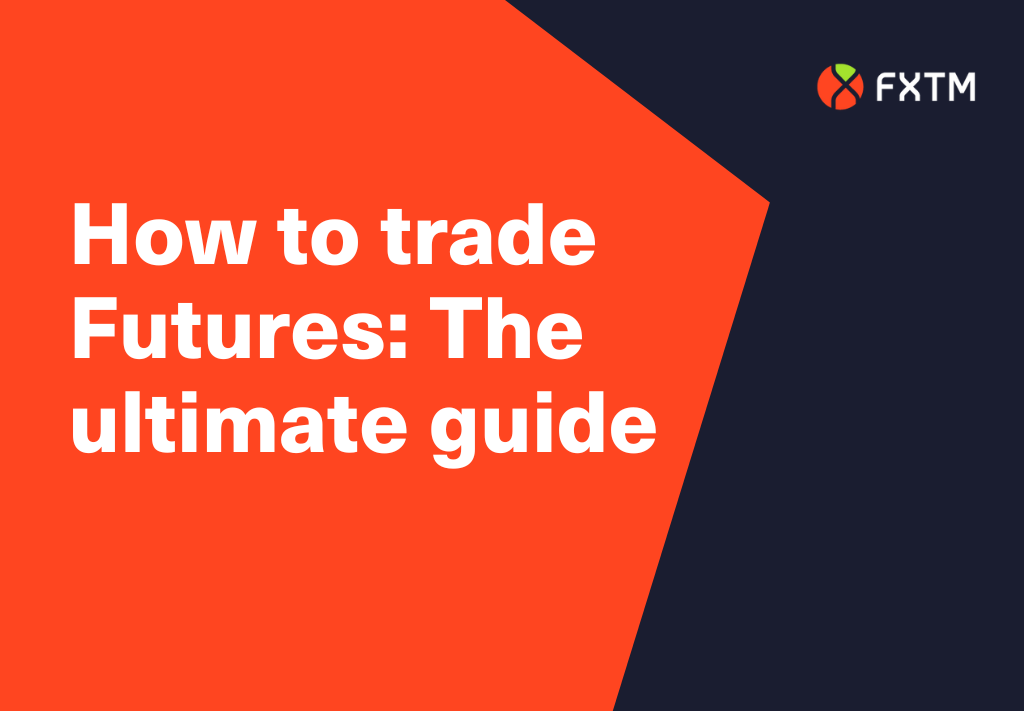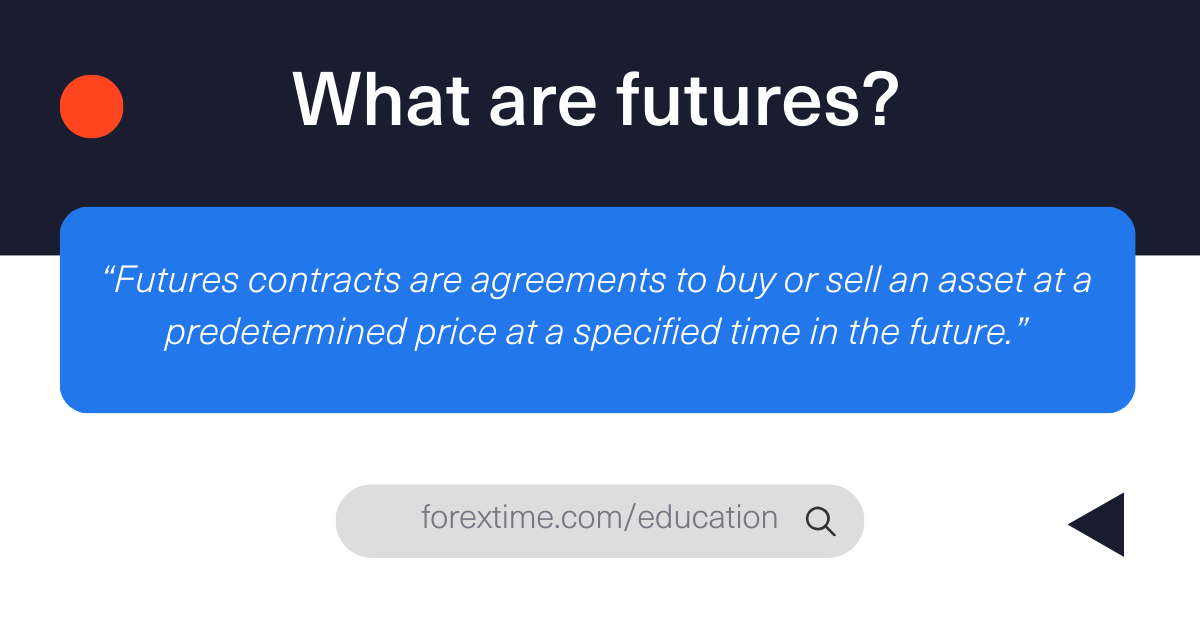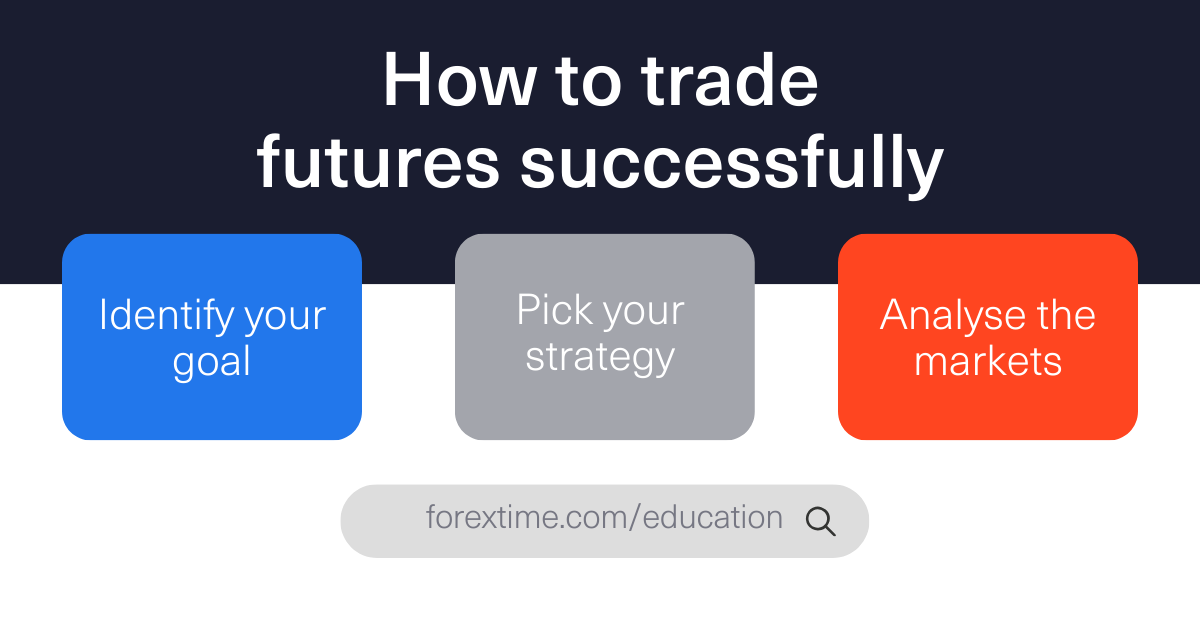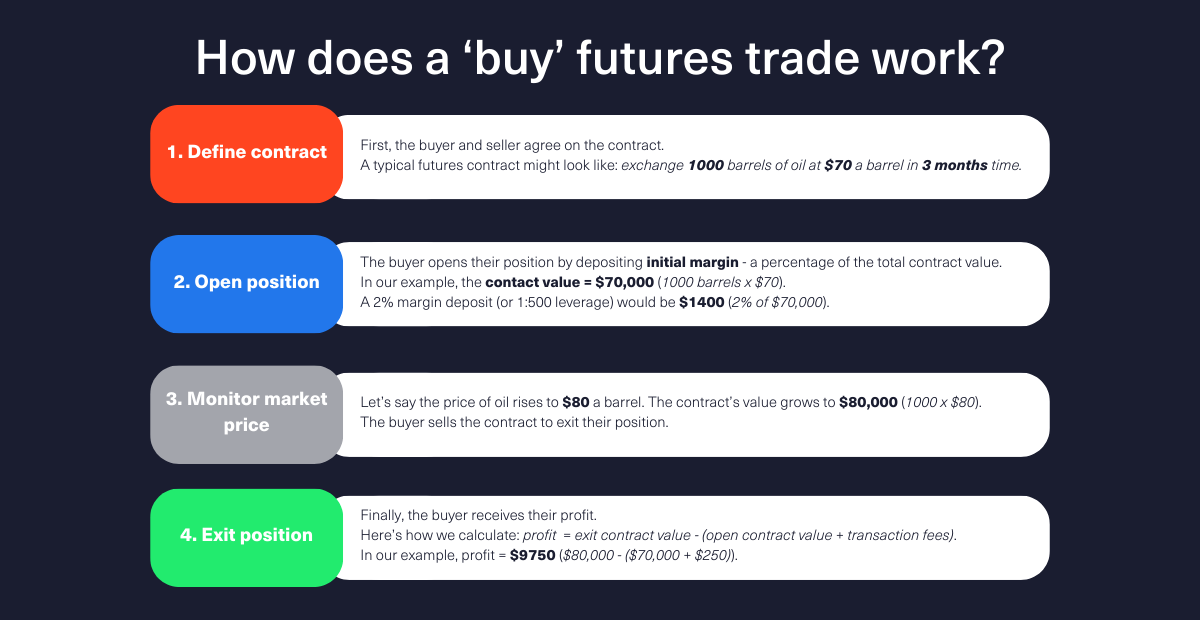How to Trade Futures: The Ultimate Guide

New to the concept of futures trading but eager to learn? You've come to the right place.
This guide will walk you through the fundamental aspects of futures trading, from understanding what futures contracts are to developing effective trading strategies.
You'll find everything you need to begin your futures trading journey.
What are Futures and why trade them?
First, let's nail down a basic futures contract definition.
Futures contracts are agreements to buy or sell an asset at a predetermined price at a specified time in the future.
Originally, these contracts were used by farmers to hedge against price fluctuations in crops. Today, they encompass a wide range of assets, including commodities, indices, currencies, and bonds.
Why trade Futures?
While people trade future contracts for a number of reasons, they offer four main advantages that make them attractive to traders today:
- Leverage: Futures trading allows you to control large positions with a relatively small amount of capital.
- Liquidity: The futures market is highly liquid, especially for popular contracts, ensuring you can enter and exit trades swiftly.
- Diversification: Futures provide access to various markets, allowing traders to diversify their portfolios effectively.
- Hedging: Futures contracts are often used to hedge against potential losses in other investments.

Who should trade Futures?
Futures trading isn't for everyone, but it can be suitable for:
- Speculators seeking to profit from market movements.
- Hedgers looking to mitigate risk.
- Institutions using futures for efficient market exposure.
Understanding the basics of Futures trading
Components of a Futures contract
Each futures contract contains specific elements:
- Lot size determines the quantity of the asset.
- Expiration date is when the contract must be settled.
- Settlement type can be either physical (actual delivery of the asset) or cash (financial settlement).
- Tick size is the minimum price movement.
How Futures markets operate
Futures markets are centralised exchanges like CME (Chicago Mercantile Exchange) and ICE (Intercontinental Exchange).
These exchanges standardise contracts to facilitate transparent trading, while clearing houses manage settlements and reduce counterparty risk.
Common Futures instruments
Futures contracts cover a broad spectrum:
- Commodities like oil, gold, and corn.
- Indices such as the S&P 500.
- Currencies including major pairs like EUR/USD.
- Bond futures for government securities.
Preparing to trade Futures
Before jumping into the futures market, there are a few essential steps to take:
Set up your Futures trading account
Choosing the right broker is crucial. Look for one that suits your trading style and offers competitive fees. Ensure you meet the account requirements, such as minimum deposit and margin requirements.
FXTM offers advanced tools and competitive conditions that cater to traders at all levels. Sign up today to trade futures as contracts for difference (CFDs) and achieve your trading goals with confidence.
Familiarise yourself with the trading platforms
Trading platforms are your gateway to the markets. Opt for platforms that offer robust tools, real-time data, and user-friendly interfaces.
Popular platforms include MetaTrader 4 and the FXTM Trading App.
Understanding margin requirements
Margin is the collateral you must post to open a trade.
- Initial margin is the amount needed to open a position.
- Maintenance margin is the minimum equity required to keep a position open.
Developing a Futures trading strategy
A trading strategy is crucial to success in the futures market. Here are some tips for developing your own:
Identify your goals
Your goals will shape your approach and trade, from trade size, leverage and how long you'd like to hold your position.
- Short-term traders focus on quick profits.
- Long-term traders aim for gradual gains.
Choose a suitable strategy
Different strategies cater to different objectives:
- Day trading involves multiple trades within a day.
- Swing trading focuses on capturing short- to medium-term gains.
- Hedging reduces risk by offsetting potential losses.
Use technical and fundamental analysis
Combine analysis types for informed trading:
- Technical analysis uses charts and indicators.
- Fundamental analysis considers economic data and news.

Executing Futures trades
Once you've developed your strategy, it's time to enter the market:
Placing an order: Step-by-step guide
- Select your contract based on your strategy.
- Choose your order type (market, limit, etc.).
- Execute the trade through your platform.
Managing open positions
Effective position management involves:
- Adjusting stop losses to protect profits.
- Taking profits by closing trades at target prices.
Understanding settlement and expiry
Know your contract's settlement type:
- Physical settlement involves actual delivery.
- Cash settlement resolves financially.
Rollover strategies manage expiring positions by transitioning to new contracts. With FXTM, you can trade futures as CFDs, avoiding any swap fees and letting your rollover your contract upon expiry.

Risk management in futures trading
Managing risks well is key in the unpredictable futures market.
It helps traders keep their money safe from sudden changes and price surprises. With futures trading, gains and losses can be big, so good risk management is a must to avoid major financial hits.
By using smart risk strategies, traders can set loss limits, spread out their investments, and stick to a disciplined trading plan. This approach helps them make smart choices and aim for a brighter financial future.
Here are some risk management techniques to consider:
Setting stop losses and position sizing
Calculate risk per trade, ensuring potential loss aligns with your risk tolerance. Proper position sizing preserves capital.
Monitoring market volatility
Ensuring you’re aware of market volatility is essential for successful futures trading.
Volatility indicators, such as the Average True Range (ATR) and Bollinger Bands, can help gauge the degree of market fluctuations.
Staying updated with economic announcements and geopolitical events is crucial since these can cause sudden price movements. Implementing real-time alerts on your trading platform can allow you to react quickly to changing market conditions, thereby reducing potential risks.
In high-volatility environments, adapt your strategy to manage risk effectively.
Avoiding common mistakes
Don't fall victim to common mistakes that can happen to new (or experienced!) future traders. Steer clear of pitfalls like:
- Over-leveraging increases risk.
- Emotion-driven trading undermines strategy.
- Chasing losses leads to poor decisions.
Make sure you don't fall for these traps by checking out common mistakes new future traders make.
Understanding regulatory requirements
Futures trading is subject to regulations, with oversight varying by country.
Ensure you understand the rules in your jurisdiction before diving into the market.
Comply with regulations set by bodies like CFTC (Commodity Futures Trading Commission) and NFA (National Futures Association).
Evaluating your Futures trading performance
Continuous evaluation is crucial for success in the futures market. Monitor and review your performance regularly to identify areas of improvement.
Here are a few ways you can make sure your trades are working for you:
Use a trade journal
Use trading journals to meticulously review past trades, analysing both successful and unsuccessful outcomes.
This practice helps identify areas for improvement by highlighting patterns and strategies that could be refined or altered.
To effectively track trading performance and make data-driven decisions, traders should monitor various Key Performance Indicators (KPIs):
- Win Rate: The percentage of successful trades, crucial for assessing strategy effectiveness.
- Profit Factor: The ratio of gross profit to gross loss, indicating overall profitability.
- Risk-Reward Ratio: The potential reward divided by the potential risk of trades, important for enhancing long-term profitability.
Regularly tracking these KPIs allows traders to gain insights into their strategies, enabling timely adjustments and improvements.
Adapt and refine your strategy
Learn from your experiences by reflecting on past successes and challenges, and adjust your strategies accordingly to achieve better outcomes in the future.
This process of evaluation and adaptation is key to personal and professional growth.
- Review your trading journal: Regularly revisit your trading journal, assessing both profitable and losing trades. Identify patterns or recurring issues that may need addressing. Learning from past experiences is essential for growth.
- Evaluate Key Performance Indicators (KPIs): Analyze your win rate, profit factor, and risk-reward ratio. These metrics provide insights into the strengths and weaknesses of your current strategy, guiding informed adjustments to optimise performance.
- Implement and monitor changes: Apply necessary modifications to your strategy and closely monitor their impact over time. Be ready to iterate and make further refinements as needed, ensuring continual improvement and adaptation to changing market conditions.
Tools and resources for Futures traders
To succeed in the futures market, you need the right tools and resources. By using modern technology and learning materials, traders can make better decisions and fine-tune their strategies.
Having access to reliable data, useful tools, and solid educational platforms can greatly boost your trading skills, helping you stay informed and competitive.
Here are just a few of the many tools and resources available to help you develop as a futures trader:
Trading platforms and charting tools
Seek platforms with features like real-time data, advanced charting, and customisable interfaces.
Educational resources for beginners
Boost your knowledge with courses, books, and tutorials. FXTM has a suite of free trading education for you to browse through.
Joining futures trading communities
Engage with peers through forums, social media groups, and mentorship programs. This provides a supportive and informative network for learning and sharing experiences.
The bottom line
Futures trading offers a world of opportunities, but it's crucial to understand the key elements, develop a sound strategy, and manage risk effectively.
With the right tools and resources, you can navigate this dynamic market with confidence and achieve your trading goals. Sign up with FXTM today to get started. Happy trading!
Ready to trade with real money?
Open accountPut your knowledge to the test
Start trading with a leading broker that gives you more.
